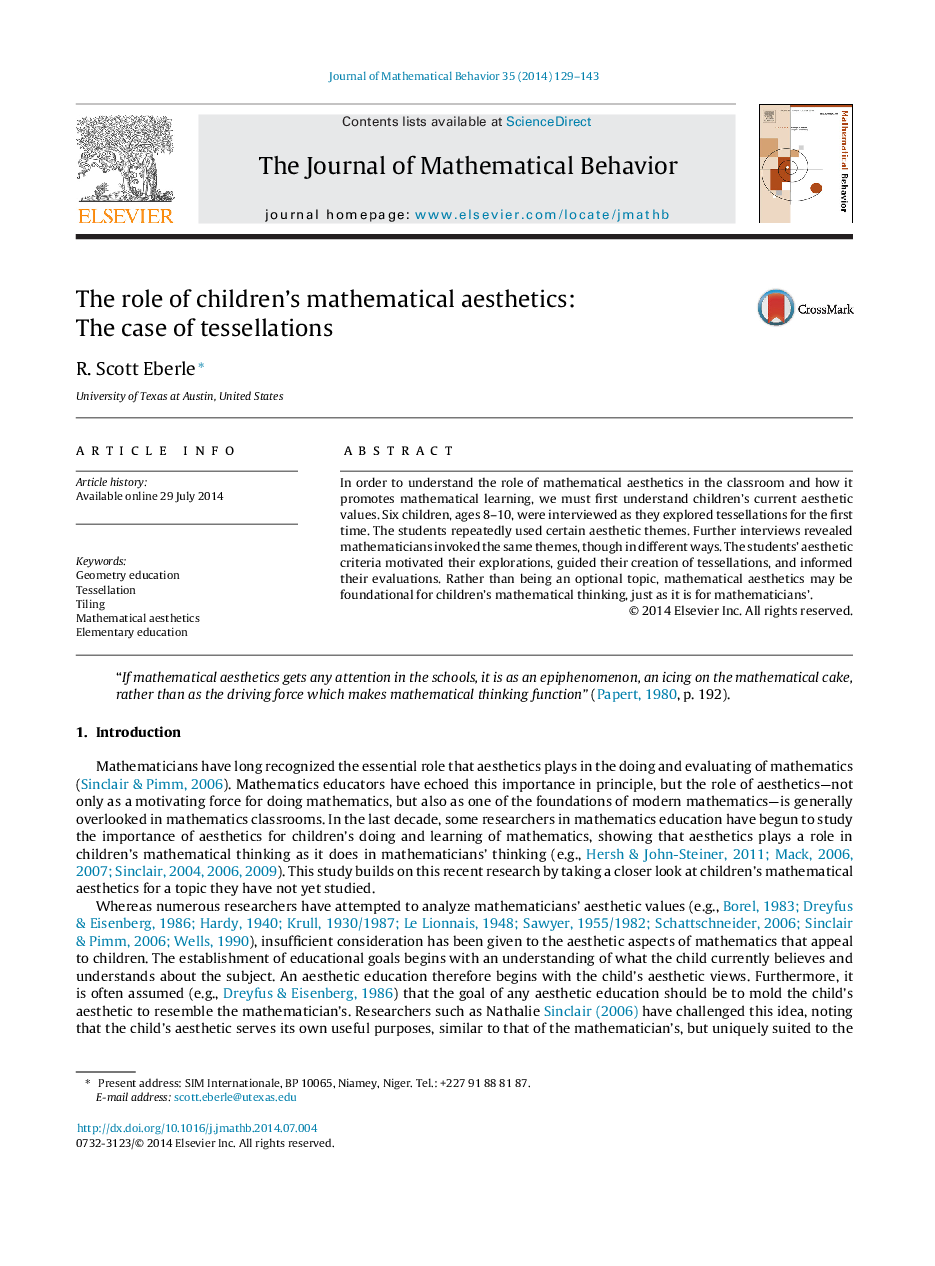| Article ID | Journal | Published Year | Pages | File Type |
|---|---|---|---|---|
| 360717 | The Journal of Mathematical Behavior | 2014 | 15 Pages |
•Six elementary students were interviewed as they explored geometric tessellations.•The students used certain aesthetic themes in their mathematical judgments.•Mathematicians use similar themes, though in different ways.•The students’ aesthetic criteria were foundational to their mathematical reasoning.
In order to understand the role of mathematical aesthetics in the classroom and how it promotes mathematical learning, we must first understand children's current aesthetic values. Six children, ages 8–10, were interviewed as they explored tessellations for the first time. The students repeatedly used certain aesthetic themes. Further interviews revealed mathematicians invoked the same themes, though in different ways. The students’ aesthetic criteria motivated their explorations, guided their creation of tessellations, and informed their evaluations. Rather than being an optional topic, mathematical aesthetics may be foundational for children's mathematical thinking, just as it is for mathematicians’.
